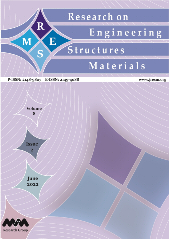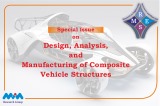Research Article
A study on high-rise RC structure with fluid viscous damper using python
Laxmi M Ramdas1, M. Helen Santhi1, G. Malathi2
1School of Civil Engineering, Vellore Institute of Technology, Chennai, Tamil Nadu, India
2School of Computer Science and Engineering, Vellore Institute of Technology, Chennai, Tamil Nadu, India
Keywords
Abstract
High-rise building;
Response Spectrum;
Time History;
Energy Dissipative System;
Seismic Response;
Python
Dampers are being used in the buildings as one of the control mechanisms to bring down the vibration due to lateral loads like earthquakes. Different types of dampers such as viscous damper, friction damper, tuned mass damper, hybrid damper, etc have gained importance in the recent past in mitigating the undesirable effects of earthquakes. The behavior of damper installed buildings during earthquakes depends on the arrangement as well as the number of dampers also. In this study, fluid viscous damper (FVD) is provided in a G+19 storey high rise RC building to reduce the vibration due to earthquake effects. IS 1893:2016 code based methods are adopted to determine the seismic responses such as lateral displacement, drift, base shear and energy dissipation of the building with and without damper using ETABS software version 2018. The main focus of this investigation is to obtain a maximum benefit of using FVD considering the different arrangement and number of dampers in the building using PYTHON on the basis of drift and energy dissipation criteria. Out of 28 building models, models 4, 27 and 28 experienced drift more than the permissible limit (0.004) as specified in IS 1893:2016. The energy dissipation capacity of the buildings with dampers varies between 1306 and 2091 kN-m for the different models under study. The program suggests the positions 2, 22, 14, 17, 5, 11 with 80 numbers of dampers for the building and recommends the position 2 for the maximum benefit in terms of drift, energy dissipation and cost.
© 2022 MIM Research Group. All rights reserved.

